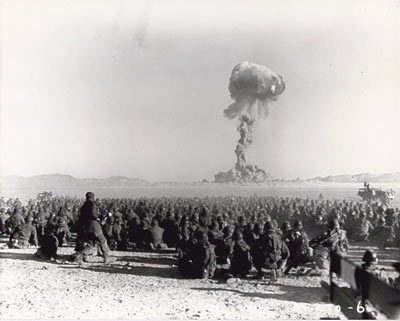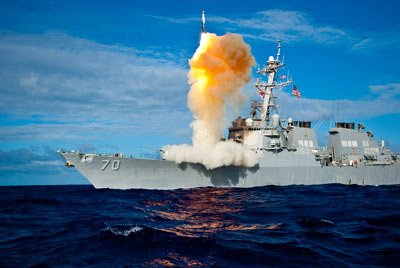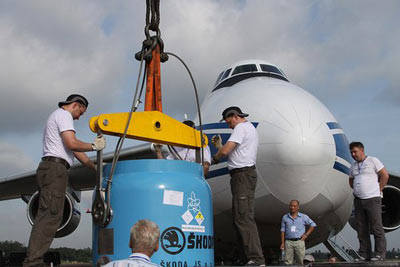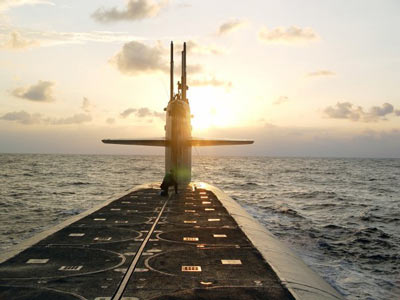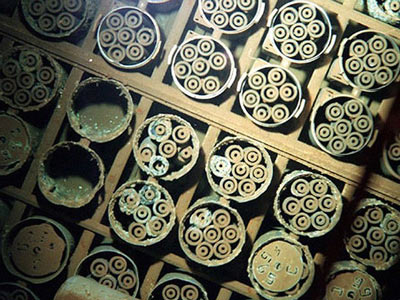1. What key activities and programs are included in the U.S. nuclear budget?
The U.S. nuclear budget comprises a variety of programs associated with nuclear weapons, nuclear nonproliferation, nuclear security, and legacy environmental and health costs. These programs are primarily managed by the Department of Defense (DoD) and the Department of Energy’s National Nuclear Security Administration (NNSA), with some other federal agencies involved in specific activities. The U.S. government spent approximately $42.3 billion on the nuclear budget in 2015. [1]

PROGRAMS INCLUDE
22. Who is responsible for setting the annual nuclear budget?
House
The White House
Like all federal government programs, the executive branch is responsible for preparing the annual budget request and submitting it to Congress.
Interagency
Each agency (Department of Defense, Department of Energy, etc.) develops its own budget with guidance from the White House Office of Management and Budget (OMB). Draft budgets are sent to the OMB for review and approval (changes are often made at this stage).
Markup
Committee Markup
A consolidated budget is then sent to Congress early each calendar year, where committees and subcommittees in the House of Representatives and the Senate with jurisdiction over specific parts of the budget review it and receive testimony from officials at the relevant agencies about their funding requests (members of the public and lobbyists from various organizations also weigh in at this stage).
Signature
or Veto
Presidential Signature or Veto
Once the bill is approved it is sent to the president to be signed into law.
33. Does the U.S. government know how much it actually spends on nuclear weapons?
Not comprehensively. That is why the cumulative numbers discussed in this tutorial are estimates. Although a number of U.S. government agencies track their nuclear spending, the government has never maintained a comprehensive account of total spending across all relevant agencies.
DoD—the agency that spends the most money in any given year—has never had a line item in its budget for nuclear weapons or weapons-related spending. This has made it very difficult, and at times impossible, for anyone—even the senior officials responsible for overseeing these programs—to know how much is being spent in any given year and how much has been spent historically.
Apart from DoD, most other government agencies (with the exception of the intelligence community) publish their annual expenditures. But there is no official line item that aggregates these costs, either annually or over time.
4. How do current versus historical U.S. estimated expenditures on nuclear weapons compare?
In the early years of the U.S. nuclear weapons program, costs were very high. In 1962, for example, nuclear weapons consumed nearly 18 percent of the total DoD budget. The percent of the DoD budget dedicated to strategic nuclear weapons fluctuated throughout the remainder of the Cold War, peaking again during the Reagan-era defense buildup. It then shrank steadily during the 1990s as large numbers of strategic weapons were eliminated, and continued to shrink during the 2000s as conventional military expenditures grew due to the war on terror, bottoming out at 2% in 2008. [2]
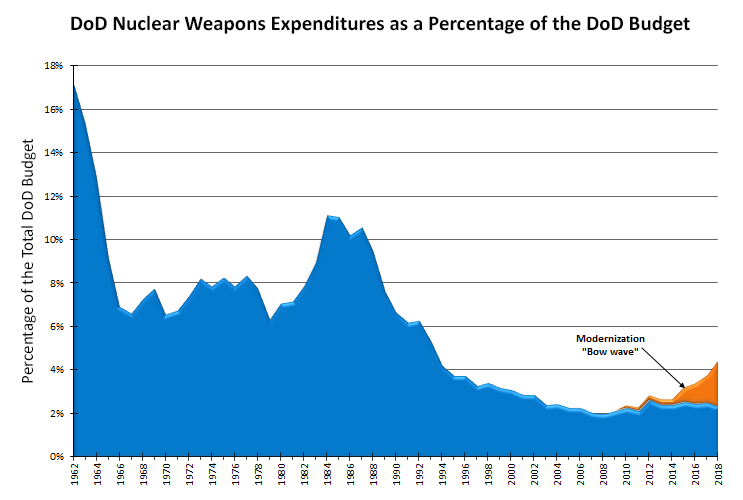
Today, DoD’s spending on nuclear weapons amounts to an estimated 2.5 percent of the department’s entire budget.
Today, DoD’s spending on nuclear weapons amounts to an estimated 2.5 percent of the department’s entire budget. However, these costs are expected to rise significantly—potentially totaling as much as $1 trillion over the next three decades—as the government attempts to develop and deploy a new strategic bomber and a new fleet of ballistic missile submarines, modernize its land-based ballistic missiles, and refurbish every warhead in the nuclear stockpile. In addition, the United States plans to rebuild large portions of its nuclear weapons production complex. [3] As for the Department of Energy, about forty-three percent of its annual budget is allocated to nuclear weapons and weapons-related programs. [4]
5. How does the size and transparency of the U.S. nuclear budget compare with other nuclear weapon states?
- While U.S. nuclear budget data is limited, no other state possessing nuclear weapons attempts to produce a publicly available accounting of its annual nuclear weapons- and nuclear security-related expenditures. France and the United Kingdom publish some consolidated figures.
- Although accurate data on worldwide nuclear spending is not readily available, reports suggest the United States spends more on nuclear weapons than any other country. [5] Among the nuclear weapon states, the United States and Russia overwhelmingly possess the largest nuclear arsenals. Some countries may spend more than the United States on nuclear weapons on a per capita basis or as a percentage of their defense budgets. [6]
Sources
[1] This chart represents actual 2015 expenditures in FY15 dollars. Unless otherwise noted, all dollar amounts in this tutorial are in FY15 dollars. “CBO Long Term Budget Outlook,” Congressional Budget Office, accessed July 14, 2016. https://www.cbo.gov/sites/default/files/114th-congress-2015-2016/reports/50250-LongTermBudgetOutlook-4.pdf
[2] Derived from House Committee on Armed Services, Hearing on National Defense Authorization Act for 2015 and Oversight of Previously Authorized Programs, 113th Congress, 2nd Session, 2014, p 103.
[3] Jon B. Wolfsthal, Jeffrey Lewis, and Marc Quint, The Trillion Dollar Triad, (Monterey, CA: James Martin Center for Nonproliferation Studies, January 2014).
[4] “FY 2016 Budget Summary Table by Organization,” Department of Energy, accessed April 10, 2016. http://energy.gov/sites/prod/files/2015/01/f19/FY2016BudgetSummaryTableByOrg_0.pdf
[5] Blair, Bruce G. and Brown, Matthew A., Global Zero Technical Report: World Spending on Nuclear Weapons Surpasses $1 Trillion Per Decade, accessed July 19, 2016. http://www.globalzero.org/files/gz_nuclear_weapons_cost_study.pdf
[6] Blair, Bruce G. and Brown, Matthew A., Global Zero Technical Report: World Spending on Nuclear Weapons Surpasses $1 Trillion Per Decade, accessed July 19, 2016. http://www.globalzero.org/files/gz_nuclear_weapons_cost_study.pdf
Chart Sources
[1] Data for Nuclear Budget Chart: Center for Arms Control and Non-Proliferation, “FY 2017 Budget: Nuclear Non-Proliferation,” last modified February 10, 2016, accessed October 03, 2016. http://armscontrolcenter.org/defense-non-proliferation-funding-comparisons/
U.S. Department of State, “Congressional Budget Justification – Department of State, Foreign Operations, and Related Programs – FY 2017,” p 187. http://www.state.gov/documents/organization/252179.pdf
U.S. Department of Homeland Security, “FY 2017 Budget-in-Brief,” p 10. https://www.dhs.gov/sites/default/files/publications/FY2017_BIB-MASTER.pdf
U.S. Department of Energy, National Nuclear Security Administration, “FY 2017 Congressional Budget Request – Volume 1,” p 1. http://energy.gov/sites/prod/files/2016/02/f29/FY2017BudgetVolume1.pdf
U.S. Department of Commerce, Bureau of Industry and Security, “FY 2017 President’s Submission,” pp BIS-14, BIS-24.
U.S. Department of Labor, Office of Workers’ Compensation Programs, “U.S. Department of Labor – Office of Workers’ Compensation Programs (OWCP),” Accessed October 03, 2016 using the WayBack Machine. http://www.dol.gov/owcp/energy/regs/compliance/weeklystats.htm
U.S. Department of Energy, National Nuclear Security Administration, “FY 2017 Congressional Budget Request – Volume 5,” p 1. http://energy.gov/sites/prod/files/2016/02/f29/FY2017BudgetVolume5_3.pdf
U.S. Department of Defense, Missile Defense Agency, “Historical Funding for MDA FY85-16,” accessed October 12, 2016. https://www.mda.mil/global/documents/pdf/FY16_histfunds.pdf
“Projected Costs of Nuclear Forces 2015-2024,” Congressional Budget Office, accessed October 10, 2016. https://www.cbo.gov/sites/default/files/114th-congress-2015-2016/reports/49870-NuclearForces.pdf
[2] Data for Historical Comparison Chart: Derived from House Committee on Armed Services, Hearing on National Defense Authorization Act for 2015 and Oversight of Previously Authorized Programs, 113th Congress, 2nd Session, 2014, p 103.
Photo Credit
Header Image: F-15 Eagle ready to takeoff for a simulated exercise. Source: U.S. Air Force photo/Chrissy Cuttita, via WikiMedia Commons.
